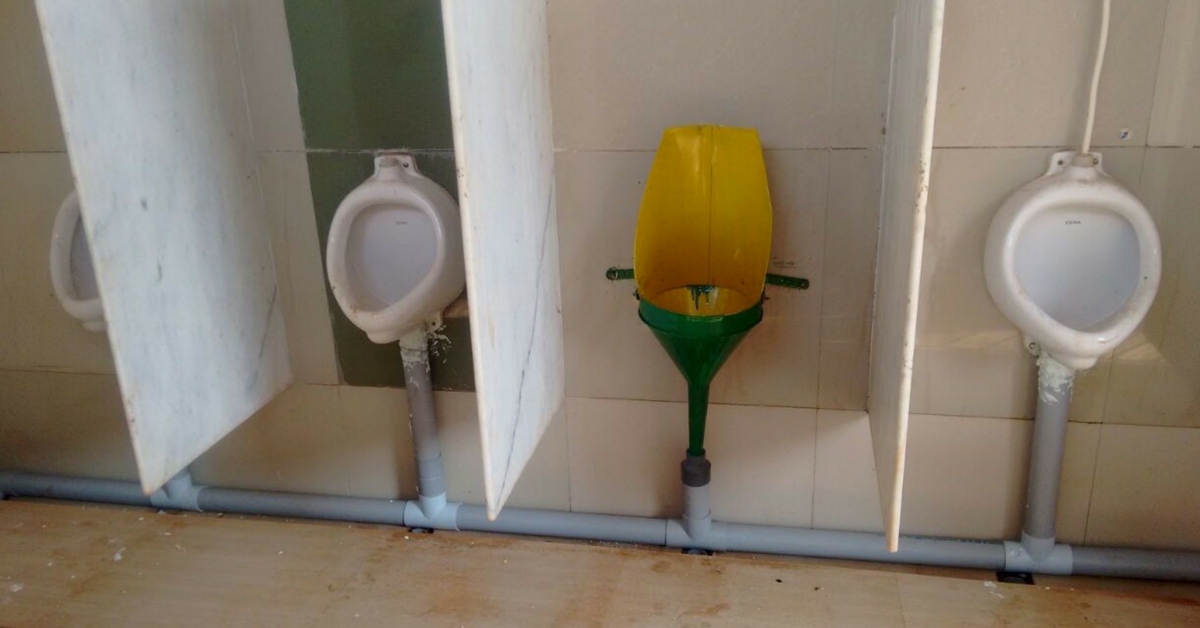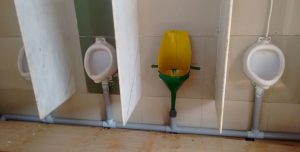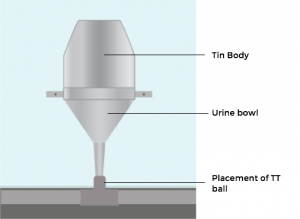TBI Blogs: How Waterless Urinals Can Change the Lives of India’s 139.9 Million Government School Students
Waterless urinals not only help solve India’s sanitation issue, their unique design can also great assist in the country’s quest for water security.

Water security is an extremely important point to ponder for securing the growth and development of the Indian economy. The countrymen of the second largest populous nation in the world rely directly or indirectly on groundwater. But the burden on groundwater has been increasing day by day since the annual waterfall declination. The nationwide drought of 2009 and 2016 affected more than 330 million people. This provides us with enough evidence of water scarcity and mismanagement of mega water resources. Sanitation is another big problem which restricts the growth of Indian welfare.

But what if the idea of ‘waterless urinals’ is implemented across the nation? Will it revolutionise the Indian sanitation system? Will it reduce the burden on already scarce water resources?
Yes, it will. It has all the potential to create a water-efficient sanitary system. Talking specifically considering the school point of view, India so far accounts for 1.4 million schools, and the number of students attending them is 139.9 million. Now give these figures a thought, and imagine the figure of reduced water consumption if waterless urinals are installed.
Average households consume 398 liters per day, and 80 liters of water go for sanitation. Even a normal urinal uses 4-6 liters of water per flush. Here again, one can find the impact of the waterless urinal in conserving water.
India struggles for water to fulfill needs from irrigation for domestic purposes and groundwater is the only source for 80 % of the population. States like Punjab, Haryana, and Maharashtra in the west, and Karnataka and Tamil Nadu in the southeast, suffer from great inadequacy and have been constrained to very minimal water resources.
Besides this, the depleting ground water level has also triggered communicable diseases due to pollution. Water extraction from deep reservoirs also exposes harmful chemicals like arsenic, causing serious health threats.
The scarcity of water has also led to water conflicts, like the Kaveri dispute between Karnataka and Tamil Nadu, and the one between Haryana and Delhi. Several states like Goa, Punjab, and Rajasthan also share conflicts with other states.
Lack of water alone adds chaos to many social, political, and environmental problems and neglecting these issues can turn disastrous for society. Rising population and the demand for water rises in parallel, but we unfortunately lack the infrastructure to meet the demand.
The latest version of the waterless urinal developed by Reap Benefit is made up of tin. The smell and the cost of maintenance both have been reduced from the previous version which was made of a plastic container and a TT ball.
The new design reduces the smell and stands tall on the parameter of hygiene.

The data suggests one single waterless urinal can save approx. 50-75 % from prior consumption. The maintenance cost also drops drastically since very few inventory parts are used. Along with these advantages, there is also saving in the water bill.
This version of the urinal has been installed in several private and public schools of Bengaluru and nearby areas. Being cost-effective, and with better durability, it has generated plenty of demand in low-budget government and private schools.
The urinal is made up of solid tin, and doesn’t require multiple inventory parts. It can be fixed anywhere with a wall for support. All you need is a few metres of plastic pipe and a single TT ball to get started.
This also reduces replacement and maintenance costs drastically.

With the future in mind, this system can revolutionise the urban public toilet system of India with minimal effort and certain enhancements in infrastructure. Waterless urinals can reduce the instances of open defecation, and can also save a lot of water in rural as well as urban areas. Their durability and low maintenance cost can make it a success in a nation which largely constitutes of lower middle-class families and a population with limited access to toilets.
Join Reap Benefit in its mission to solve local civic environmental problems through data and innovation. Visit the website.
Like this story? Or have something to share?
Write to us: [email protected]
Connect with us on Facebook and Twitter.
NEW: Click here to get positive news on WhatsApp!
This story made me
- 97
- 121
- 89
- 167
Tell Us More
We bring stories straight from the heart of India, to inspire millions and create a wave of impact. Our positive movement is growing bigger everyday, and we would love for you to join it.
Please contribute whatever you can, every little penny helps our team in bringing you more stories that support dreams and spread hope.



















